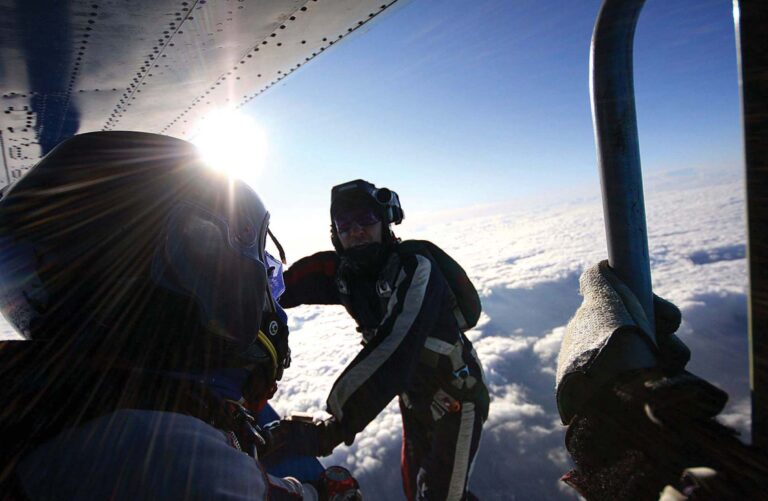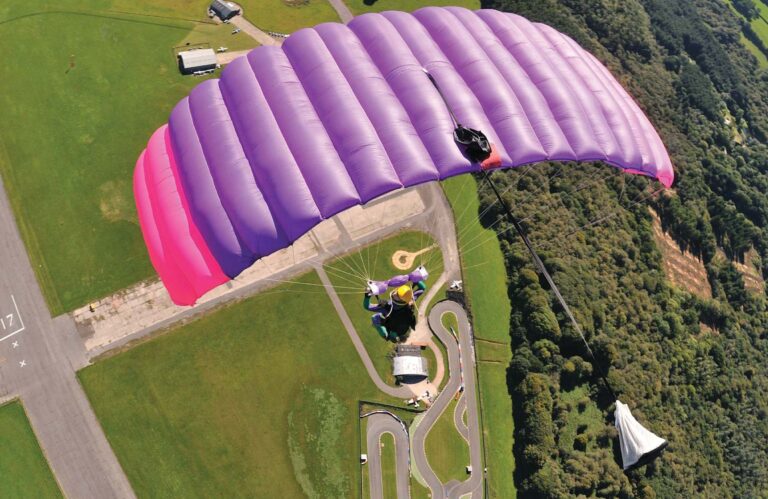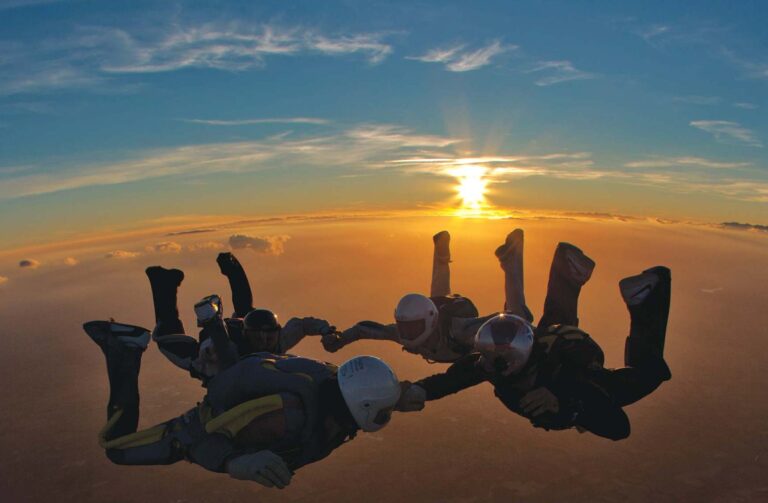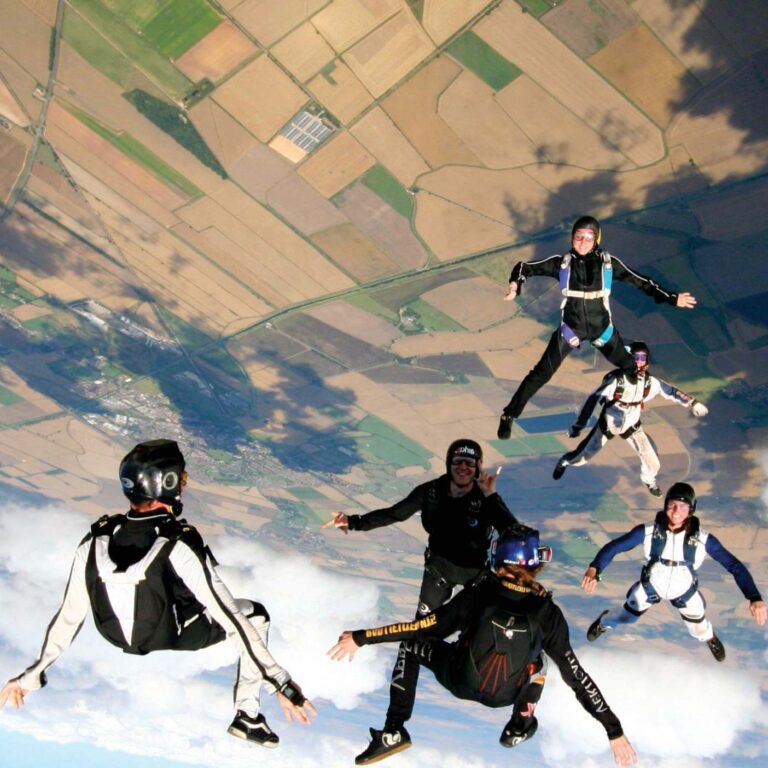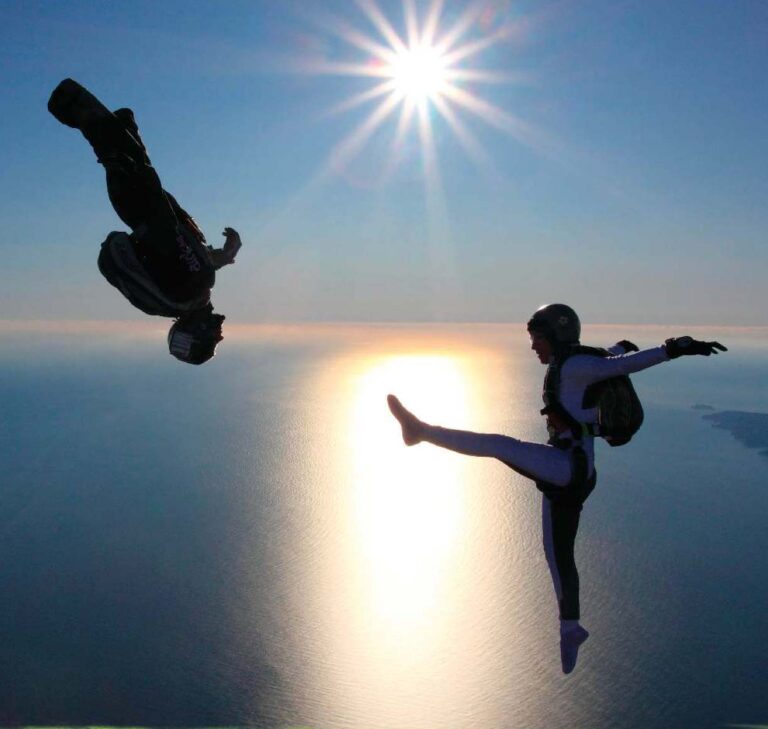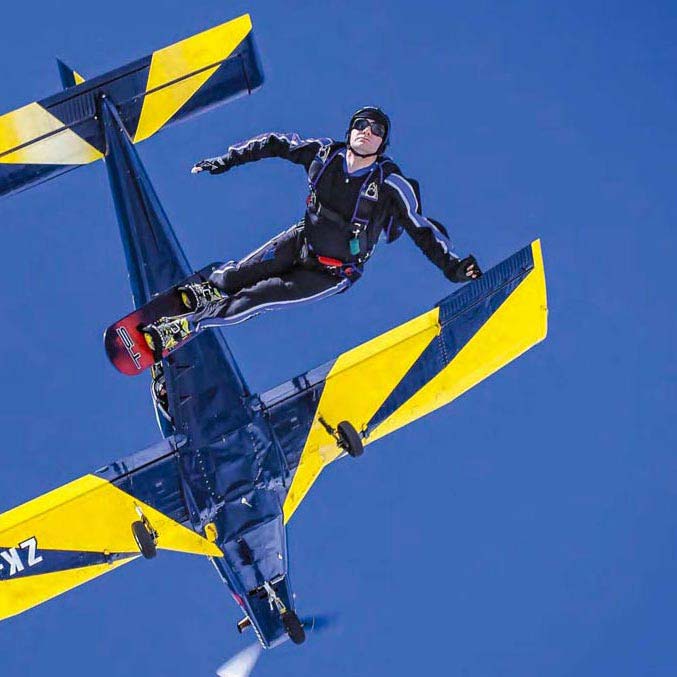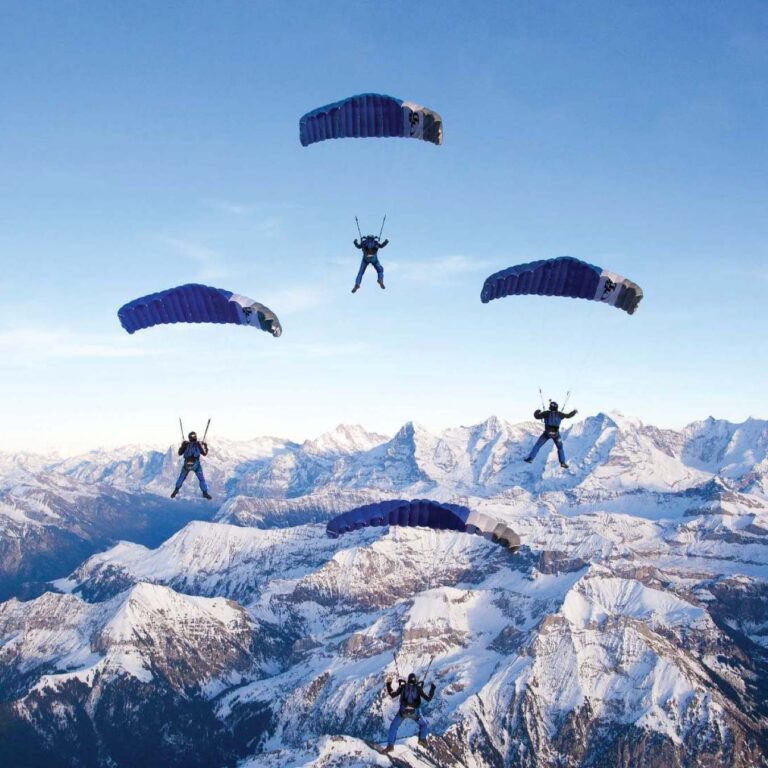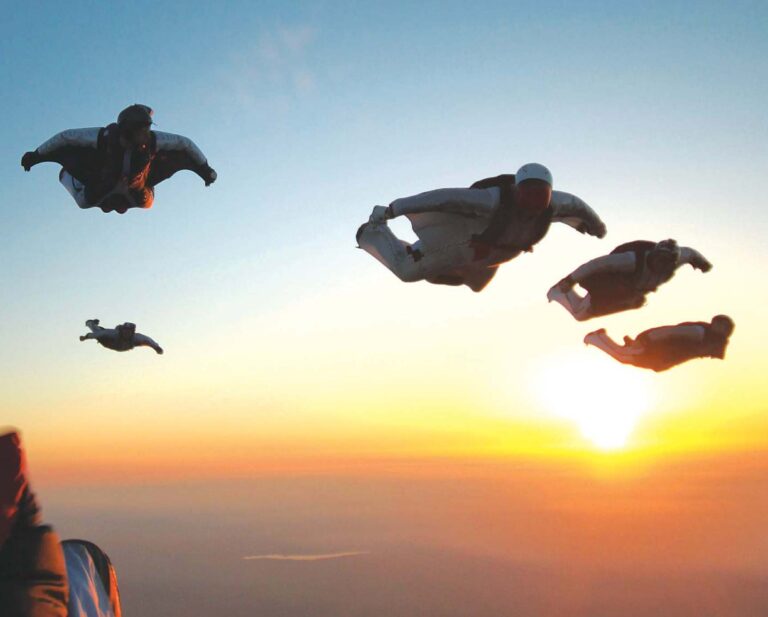WS1 & WS2 - Wingsuiting 1 & 2
Wingsuits, when flown correctly, greatly reduce your vertical speed in exchange for horizontal speed. To get started, you need 500 jumps or at least 200 jumps within the last 18 months. Once you can demonstrate you’ve mastered basic belly to earth techniques – those covered in FS1 – you can be introduced to wingsuiting by a coach.
The WS1 qualification covers the skills needed to safely exit, fly and deploy in a wingsuit, as well as understanding the extra flight planning that is needed due to the horizontal distance that will be covered. After WS1 you can learn the skills needed to jump with other wingsuiters, including diving down to a target, increasing and decreasing forward speed, sideways movement and recovery from instability. WS2 is the proof that you have accomplished these skills to a level where you may safely plan wingsuit jumps with others.
